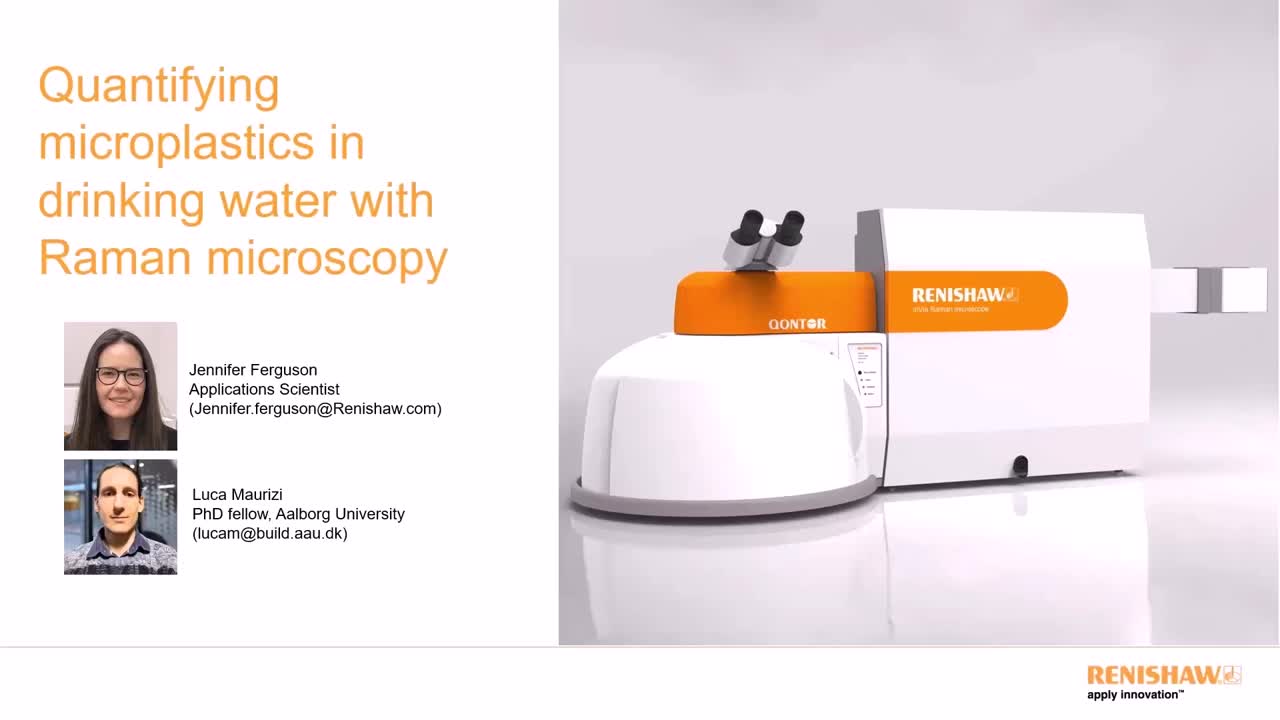Heading 1
Lorem Ipsum is simply dummy text of the printing and typesetting industry. Lorem Ipsum has been the industry's standard dummy text ever since the 1500s, when an unknown printer took a galley of type and scrambled it to make a type specimen book.
Form Heading
Heading 2
Lorem Ipsum is simply dummy text of the printing and typesetting industry. Lorem Ipsum has been the industry's standard dummy text ever since the 1500s, when an unknown printer took a galley of type and scrambled it to make a type specimen book.
Watch our on-demand webinar:
Quantifying microplastics in drinking water with Raman microscopy
Microplastic pollution and its potential impact on human health is an area of significant concern. Increasingly, Raman microscopy is being used to quantify microplastic contamination from samples of food and drinking water.
In this webinar we present a real-world case study on microplastics with Luca Maurizi, from Aalborg University, Denmark. Luca will present his sampling and analytical methodology for microplastic identification in drinking water. Samples were collected from a water treatment plant and analysed using a Renishaw inVia™ confocal Raman microscope.
The high spatial resolution of the inVia microscope detected incomplete removal of particles smaller than 10 µm. The Raman analysis method estimates that the daily microplastic intake is up to 7,000 times higher than previous estimates obtained using µFTIR [1]. We also discuss quantitative Raman analysis results on nanoplastics between 0.45 µm to 1 µm in size. We will also demonstrate how Renishaw’s Particle Analysis software enables a fully automated workflow for microplastic identification and characterisation.
Luca Maurizi’s research is a part of the MONPLAS project. His research aims to develop new analytical methodologies for micro- and nanoplastic identification and quantification in drinking water, and their degree of diffusion in relation to common distribution networks.
[1] Kirstein, I. V., Hensel, F., Gomiero, A., Iordachescu, L., Vianello, A., Wittgren, H. B., & Vollertsen, J., 2021. Drinking plastics? – Quantification and qualification of microplastics in drinking water distribution systems by µFTIR and Py-GCMS. Water research, 188, 116519.


Meet your experts:

Luca Maurizi, Early Stage Researcher
Born in Narni (Italy) Luca is a Ph.D. Fellow at the Build Environment Department of Aalborg University in the framework of the MONPLAS project. His research aims to develop new analytical methodologies for micro- and nano-plastic identification and quantification in drinking waters, so to study their degree of diffusion in relation with common distribution networks.


Jennifer Ferguson, Raman Applications Scientists
Jenny is an experienced Raman analyst, completing a PhD in physics which specialised in the analysis of graphene as an antimicrobial agent using Raman spectroscopy. She has specific expertise in data processing and analysis, as well as covering a wide range of conventional and biological Raman applications.
Heading 6
Lorem Ipsum is simply dummy text of the printing and typesetting industry. Lorem Ipsum has been the industry's standard dummy text ever since the 1500s, when an unknown printer took a galley of type and scrambled it to make a type specimen book.
Meet your experts:

Luca Maurizi, Early Stage Researcher
Born in Narni (Italy) Luca is a Ph.D. Fellow at the Build Environment Department of Aalborg University in the framework of the MONPLAS project. His research aims to develop new analytical methodologies for micro- and nano-plastic identification and quantification in drinking waters, so to study their degree of diffusion in relation with common distribution networks.

Jennifer Ferguson, Raman Applications Scientists
Jenny is an experienced Raman analyst, completing a PhD in physics which specialised in the analysis of graphene as an antimicrobial agent using Raman spectroscopy. She has specific expertise in data processing and analysis, as well as covering a wide range of conventional and biological Raman applications.
